Did you know that Eritrea, a small country located in the Horn of Africa, is home to a remarkable array of wildlife and plant species? Despite its relatively small size, Eritrea boasts a rich biodiversity that is worth preserving. From unique mammals to endemic plants, the country’s ecosystems are teeming with life that is both fascinating and under threat. In this article, we explore Eritrea’s biodiversity, the conservation efforts being undertaken, and the challenges that lie ahead.
Key Takeaways
- Eritrea is home to diverse animal and plant species, making it a biodiversity hotspot.
- The country has established ministries and policies to protect its biodiversity.
- Protected areas, such as Semienawi and Debubawi Bahri, play a crucial role in conservation efforts.
- Eritrea faces challenges in implementing its National Biodiversity Strategy and Action Plan.
- To ensure effective conservation, coordination, awareness, and resource mobilization are needed.
Eritrea’s Key Biodiversity Hotspots
Eritrea is home to several key biodiversity hotspots that play a crucial role in preserving its unique ecosystems, species, and genetic diversity. These hotspots include:
- Semienawi and Debubawi Bahri
- Buri-Irori-Hawakil
- Berasole estuary
- Gash-Setit Elephant Sanctuary
Although these areas are not officially gazetted, they have already been delineated and mapped, covering approximately 150,000 hectares. The aim is to protect and conserve the diverse ecosystems and wildlife found within them.
However, it is important to note that there has been limited progress in terms of delineation and management zoning in the Buri Irrori and Hawakil area. To ensure the effectiveness of conservation efforts, it is crucial to establish and implement management and business plans for all proposed protected areas.
Preserving Eritrean Ecosystems
Eritrea’s biodiversity hotspots are critical for maintaining the balance of ecosystems and supporting the survival of various plant and animal species. These areas serve as habitats for numerous endemic and endangered species that rely on the unique ecosystems for their survival.
By preserving these hotspots, Eritrea can safeguard its rich biodiversity and contribute to global conservation efforts. The protection of these ecosystems is not only essential for the well-being of local flora and fauna but also for the overall health of the planet.
Conserving Eritrea’s biodiversity hotspots requires a collaborative effort involving government agencies, local communities, and international organizations. Together, we can ensure that these areas remain protected for generations to come.
“The preservation of Eritrea’s biodiversity hotspots is vital for the long-term sustainability of its ecosystems and the well-being of its unique plant and animal species.” – [Your Name], Conservation Expert
https://www.youtube.com/watch?v=OBf6gEeUWOA
| Biodiversity Hotspot |
Area (hectares) |
| Semienawi and Debubawi Bahri |
60,000 |
| Buri-Irori-Hawakil |
30,000 |
| Berasole estuary |
40,000 |
| Gash-Setit Elephant Sanctuary |
20,000 |
| Total |
150,000 |
Eritrea’s Successes in Biodiversity Conservation
Eritrea has achieved remarkable success in conserving its biodiversity through the establishment of protected areas. Two noteworthy examples are the Semienawi and Debubawi Bahri protected area and the Gash-Setit Elephant Sanctuary. These areas have been meticulously delineated and mapped, covering approximately 150,000 hectares.
Protected through government directives, these initiatives aim to address the root causes of biodiversity loss, alleviate direct pressures on wildlife and ecosystems, enhance species diversity, optimize the benefits derived from biodiversity, and fortify implementation efforts through participatory planning and capacity building.
However, it is important to note that the management and business plans for all proposed protected areas are still in the development phase. Once established, these plans will help ensure the effective and sustainable conservation of Eritrea’s rich and diverse ecosystems.
One of the key achievements in biodiversity conservation in Eritrea is the preservation of the Semienawi and Debubawi Bahri protected area and the Gash-Setit Elephant Sanctuary. Covering a significant expanse of land, these protected areas are spearheading efforts to safeguard Eritrea’s unique flora and fauna. Through meticulous mapping and delineation, these areas are protected by government directives. The dedicated focus on addressing the underlying causes of biodiversity loss, relieving direct pressures on ecosystems and species, and strengthening implementation efforts showcases Eritrea’s commitment to biodiversity conservation.
“Biodiversity is not just about saving endangered species, but also about the critical ecosystems and services they provide, such as clean air, water, and food security.” – Eritrea Conservation Organization
The establishment of protected areas in Eritrea is a testament to the country’s dedication to conserving its natural heritage. It sets the foundation for preserving the country’s biodiversity and protecting the invaluable ecological services these areas provide. Efforts to develop comprehensive management and business plans for all proposed protected areas will further strengthen Eritrea’s conservation achievements and ensure the long-term sustainability of its ecosystems.

Eritrea’s Challenges in Biodiversity Conservation
Eritrea faces several challenges in biodiversity conservation. These challenges hinder the efforts to protect and sustainably manage the country’s rich biodiversity.
1. Lack of Awareness on Conservation and Sustainable Use of Biodiversity
One of the significant challenges is the limited awareness among the general population about the importance of biodiversity conservation and the sustainable use of its resources. This lack of awareness hampers efforts to engage the public in biodiversity conservation initiatives and implement sustainable practices.
2. Insufficient Coordination between Stakeholders
The coordination between different stakeholders involved in biodiversity conservation efforts is inadequate. The lack of proper coordination leads to duplication of efforts, inefficient resource allocation, and a fragmented approach to conservation. To address this challenge, it is crucial to establish effective coordination mechanisms that foster collaboration and information sharing among stakeholders.
3. Inadequate Integration of Biodiversity Issues at the Local Level
Another challenge is the insufficient integration of biodiversity issues at the local level. Local communities play a vital role in biodiversity conservation, as they are often the custodians of natural resources. However, limited knowledge and recognition of the importance of biodiversity at the local level hinder the effective implementation of conservation measures.
4. Limited Taxonomic Knowledge
Eritrea faces a challenge in terms of limited taxonomic knowledge, particularly regarding less visible and less studied species. This knowledge gap affects the understanding of species distribution, population dynamics, and the identification of threatened species. It also hinders the development of effective conservation strategies targeted at specific species or habitats.
5. Inadequate Resource Mobilization
Insufficient financial and human resources pose a significant challenge to biodiversity conservation in Eritrea. Limited funding restricts the implementation of conservation programs, the establishment and management of protected areas, and the enforcement of biodiversity regulations.
6. Insufficient Monitoring and Evaluation
Eritrea lacks a comprehensive monitoring and evaluation system for biodiversity conservation initiatives. This gap makes it difficult to assess the effectiveness of conservation measures, identify areas of improvement, and measure progress towards conservation goals. A robust monitoring and evaluation framework can help ensure that conservation efforts are evidence-based and adaptive.
Eritrea needs to address these challenges by improving coordination among stakeholders, raising awareness about the importance of biodiversity conservation, mainstreaming biodiversity efforts at the local level, enhancing taxonomic knowledge, mobilizing resources effectively, and establishing a comprehensive monitoring and evaluation system.

Eritrea’s National Biodiversity Strategy and Action Plan
Eritrea has developed a National Biodiversity Strategy and Action Plan (NBSAP) that serves as a comprehensive framework for guiding its efforts in biodiversity conservation. The revised NBSAP, covering the period from 2014 to 2020, lays out strategic goals and actions to address the pressing issues surrounding biodiversity loss and ecosystem degradation.
The primary goals of Eritrea’s NBSAP include:
- Addressing the underlying causes of biodiversity loss: Eritrea’s strategy aims to identify and mitigate the various factors contributing to the decline in biodiversity, such as habitat destruction, unsustainable resource use, and climate change.
- Reducing direct pressures on biodiversity: The action plan seeks to minimize the detrimental impacts of human activities on ecosystems and species by implementing effective conservation measures and promoting sustainable development practices.
- Improving the status of biodiversity by safeguarding ecosystems and species diversity: Eritrea recognizes the importance of preserving and restoring ecosystems to maintain healthy populations of plants and animals. The NBSAP emphasizes the protection and management of key habitats and the conservation of endangered species.
- Enhancing the benefits from biodiversity and ecosystem services: The strategy emphasizes the value of biodiversity in supporting human well-being and aims to maximize the benefits derived from ecosystems, such as clean water, pollination, and climate regulation.
- Enhancing implementation through participatory planning and capacity building: Eritrea recognizes the need for collaborative efforts and the involvement of all stakeholders in biodiversity conservation. The NBSAP encourages participation, knowledge sharing, and capacity building to ensure the effective implementation of conservation initiatives.
The National Biodiversity Strategy and Action Plan plays a crucial role in Eritrea’s commitment to reducing biodiversity losses and promoting the sustainable use of ecosystems. By implementing the strategies outlined in the plan, Eritrea strives to protect its unique biodiversity for the benefit of present and future generations.
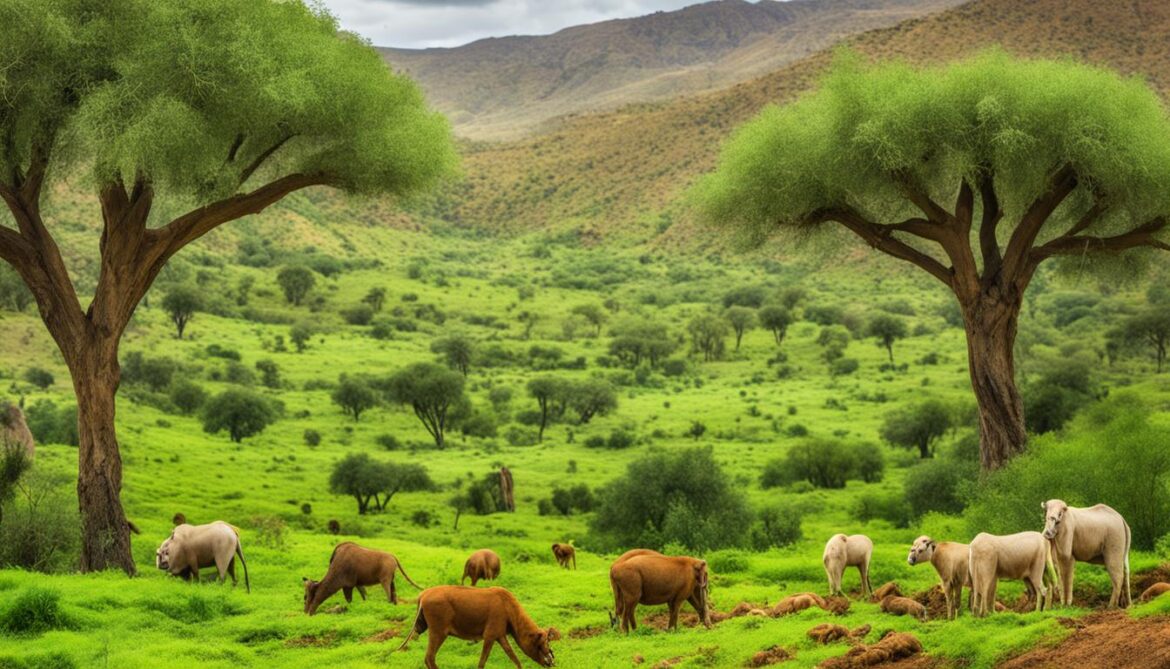
| Strategy Goals |
Description |
| Addressing the underlying causes of biodiversity loss |
Evaluating and mitigating factors contributing to biodiversity decline |
| Reducing direct pressures on biodiversity |
Implementing measures to minimize human impacts on ecosystems and species |
| Improving the status of biodiversity by safeguarding ecosystems and species diversity |
Protecting key habitats and conserving endangered species |
| Enhancing the benefits from biodiversity and ecosystem services |
Promoting the value of biodiversity and maximizing ecosystem benefits |
| Enhancing implementation through participatory planning and capacity building |
Encouraging collaboration, knowledge sharing, and capacity development |
Eritrea’s Policy and Governance Approach to Biodiversity
Eritrea recognizes the importance of implementing effective policies and governance structures to safeguard its rich biodiversity. The country has formulated a comprehensive set of policies, strategies, and plans that guide its conservation efforts. These include legislation such as the National Action Program to Combat Desertification and mitigate the effects of Drought, Forest and Wildlife Conservation and Development Proclamation, National Coastal Policy, Land Use Policy, Water Policy, and Fisheries Proclamation.
The Ministry of Land, Water and Environment (MoLWE) plays a crucial role in coordinating biodiversity conservation activities and overseeing the implementation of the Convention on Biological Diversity (CBD) in Eritrea. Through these policies and the dedicated efforts of the MoLWE, Eritrea aims to ensure sustainable management and protection of its diverse ecosystems and species.
Eritrea has also devised a National Biodiversity Strategy and Action Plan (NBSAP) that serves as a roadmap to achieve its conservation goals. The NBSAP was last revised in 2015 to align with the country’s evolving priorities and international commitments. By formulating this plan, Eritrea demonstrates its commitment to preserving its unique biodiversity and promoting sustainable development.
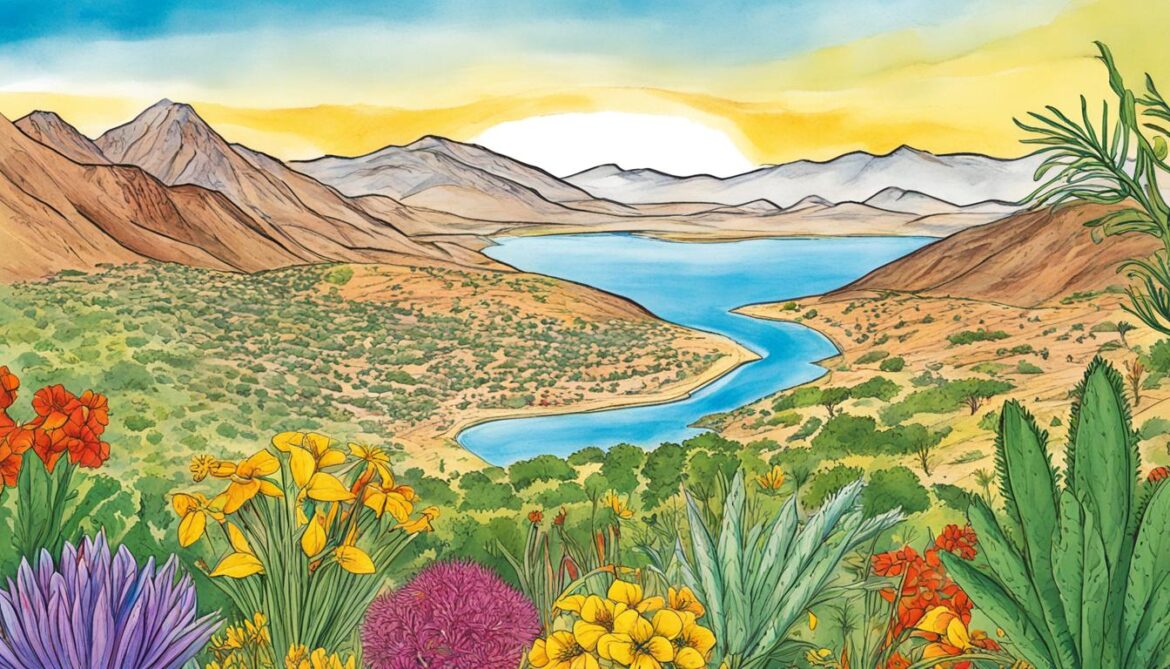
The NBSAP encompasses a range of strategic actions aimed at addressing biodiversity loss, reducing direct pressures on ecosystems, improving the status of biodiversity, and enhancing the overall benefits derived from natural resources. It emphasizes the importance of participatory planning and capacity building to enable effective implementation across all sectors and levels of society.
Eritrea’s policy and governance approach reflect the nation’s dedication to biodiversity preservation. The integration of these policies into Eritrea’s conservation framework underscores the country’s commitment to sustainable development and the long-term well-being of its people and natural resources.
“Eritrea’s comprehensive set of biodiversity policies and governance structures pave the way for effective conservation efforts and sustainable development. By prioritizing the integration of biodiversity considerations into various sectors, Eritrea aims to protect its natural heritage and ensure a resilient future.”
Key Policies and Legislation
| Policy/Legislation |
Description |
| National Action Program to Combat Desertification and mitigate the effects of Drought |
Aims to prevent and mitigate land degradation, desertification, and drought through sustainable land management practices. |
| Forest and Wildlife Conservation and Development Proclamation |
Provides a legal framework for the protection and sustainable management of forests and wildlife, ensuring their conservation for future generations. |
| National Coastal Policy |
Guides the sustainable use and management of coastal areas and marine resources, protecting marine biodiversity and promoting coastal resilience. |
| Land Use Policy |
Regulates the allocation and management of land resources, promoting sustainable land use practices and protecting critical ecosystems. |
| Water Policy |
Outlines the principles and guidelines for sustainable water resource management, ensuring equitable access to clean water and supporting ecosystem health. |
| Fisheries Proclamation |
Regulates the utilization and management of fisheries resources, promoting sustainable fishing practices and conservation of marine biodiversity. |
Eritrea’s Goals and Ambitions for Biodiversity Conservation
Eritrea’s Revised NBSAP (2014-2020) sets forth a comprehensive framework of goals and objectives aimed at preserving and enhancing the country’s rich biodiversity. The objectives of the National Biodiversity Strategy and Action Plan encompass three distinct ecosystems: terrestrial biodiversity, coastal marine and island biodiversity, and agro-biodiversity.
For terrestrial biodiversity, Eritrea’s primary goal is the rehabilitation of degraded ecosystems. By restoring these ecosystems, the country aims to protect and promote the diverse array of plant and animal species that reside within them. Through conservation efforts, Eritrea seeks to safeguard its unique ecosystems while also addressing the pressures that contribute to biodiversity loss.
In the coastal marine and island biodiversity sphere, Eritrea is dedicated to the conservation and proper management of its marine resources. The country recognizes the importance of protecting its coastal ecosystems, including coral reefs, seagrass beds, and mangrove forests. By implementing sustainable management practices, Eritrea endeavors to preserve these vital habitats and the wide variety of marine species they support.
Additionally, Eritrea aims to ensure the sustainable use of agro-biodiversity resources. The country recognizes the important role that agricultural biodiversity plays in providing food security and supporting rural livelihoods. By implementing sustainable farming practices and promoting the use of diverse crop varieties, Eritrea seeks to maintain the productivity and resilience of its agricultural systems.
Biodiversity Conservation in Eritrea – Key Objectives
- Rehabilitation of degraded terrestrial ecosystems
- Conservation and management of coastal, marine and island biodiversity
- Sustainable use of agro-biodiversity resources
Eritrea’s commitment to conserving its biological diversity extends beyond the preservation of ecosystems and species. The country also emphasizes the responsible and equitable utilization of its genetic resources. By promoting fair and equitable sharing of benefits arising from the use of genetic resources, Eritrea seeks to ensure that local communities and the nation as a whole reap the rewards of biodiversity conservation efforts.
Through these ambitious goals and objectives, Eritrea demonstrates its dedication to the long-term sustainability of its natural heritage. By preserving its biodiversity and promoting sustainable practices, the country strives to safeguard its ecosystems, protect its native species, and create a more harmonious relationship between humans and the environment.
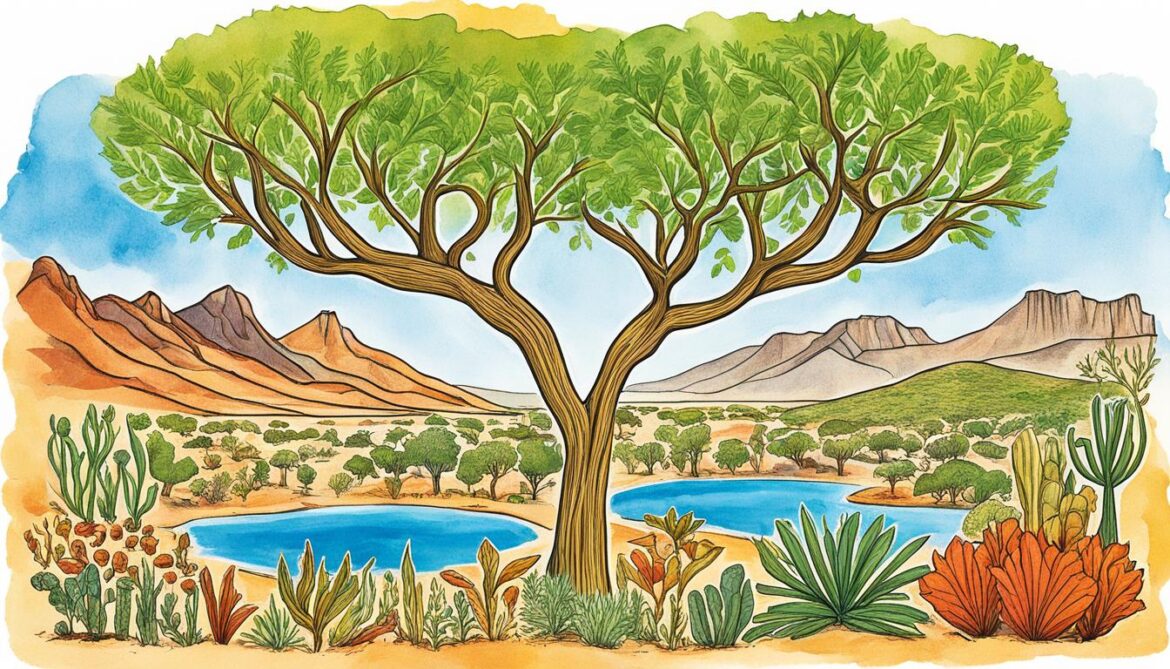
| Ecosystem |
Goals |
| Terrestrial Biodiversity |
Rehabilitation of degraded ecosystems |
| Coastal Marine and Island Biodiversity |
Conservation and management of marine resources |
| Agro-biodiversity |
Sustainable use of agricultural biodiversity resources |
Eritrea’s Need for Effective Implementation
To successfully manage and implement the National Biodiversity Strategy and Action Plan (NBSAP), Eritrea must improve coordination, raise awareness, and mainstream biodiversity efforts among different stakeholders. Effective implementation requires capacity building, coordination of activities, mobilization of resources, and monitoring and evaluation. By strengthening these aspects, Eritrea can achieve its objectives in biodiversity conservation and ensure the long-term sustainability of its ecosystems and species.
Coordination and Awareness
Effective biodiversity conservation in Eritrea relies on improved coordination and collaboration among relevant ministries, institutions, and communities. Eritrea needs to establish a robust framework for information sharing, knowledge exchange, and joint decision-making. By fostering partnerships and strengthening coordination mechanisms, the country can enhance its capacity to implement the NBSAP and address the challenges of biodiversity loss.
Eritrea should also prioritize raising awareness about the importance of biodiversity conservation and its link to sustainable development among all sectors of society. By promoting education and outreach initiatives, Eritrea can empower communities to actively participate in conservation efforts and support the implementation of the NBSAP.
Mainstreaming Biodiversity
Mainstreaming biodiversity considerations across different sectors and policies is crucial for the effective implementation of the NBSAP in Eritrea. The integration of biodiversity into development planning, land use management, and environmental impact assessments will enhance the country’s capacity to conserve and sustainably use its natural resources.
Eritrea should promote the inclusion of biodiversity considerations in relevant policies, such as agriculture, fisheries, forestry, and tourism. By aligning sectoral policies with biodiversity conservation goals, Eritrea can ensure that economic development is pursued in a sustainable and environmentally responsible manner.
Capacity Building and Resource Mobilization
To implement the NBSAP effectively, Eritrea needs to prioritize capacity building initiatives that enhance technical expertise, knowledge transfer, and skills development among relevant stakeholders. This includes training programs for government officials, conservation practitioners, and local communities to improve their understanding of biodiversity conservation and management techniques.
In addition, Eritrea should actively seek partnerships and explore innovative financing mechanisms to mobilize the necessary resources for biodiversity conservation. This can include engaging with international organizations, bilateral donors, and private sector entities to secure funding and technical support for the implementation of the NBSAP.
Monitoring and Evaluation
Regular monitoring and evaluation of biodiversity conservation activities are essential for measuring progress, identifying gaps, and making informed decisions for effective implementation. Eritrea should establish robust monitoring systems to assess the status of ecosystems, species, and genetic diversity, as well as the effectiveness of conservation measures.
By investing in monitoring and evaluation programs, Eritrea can gather data-driven insights to inform evidence-based decision-making and adapt conservation strategies accordingly. This will enhance the country’s ability to track progress towards its biodiversity conservation goals and ensure that resources and efforts are allocated efficiently.
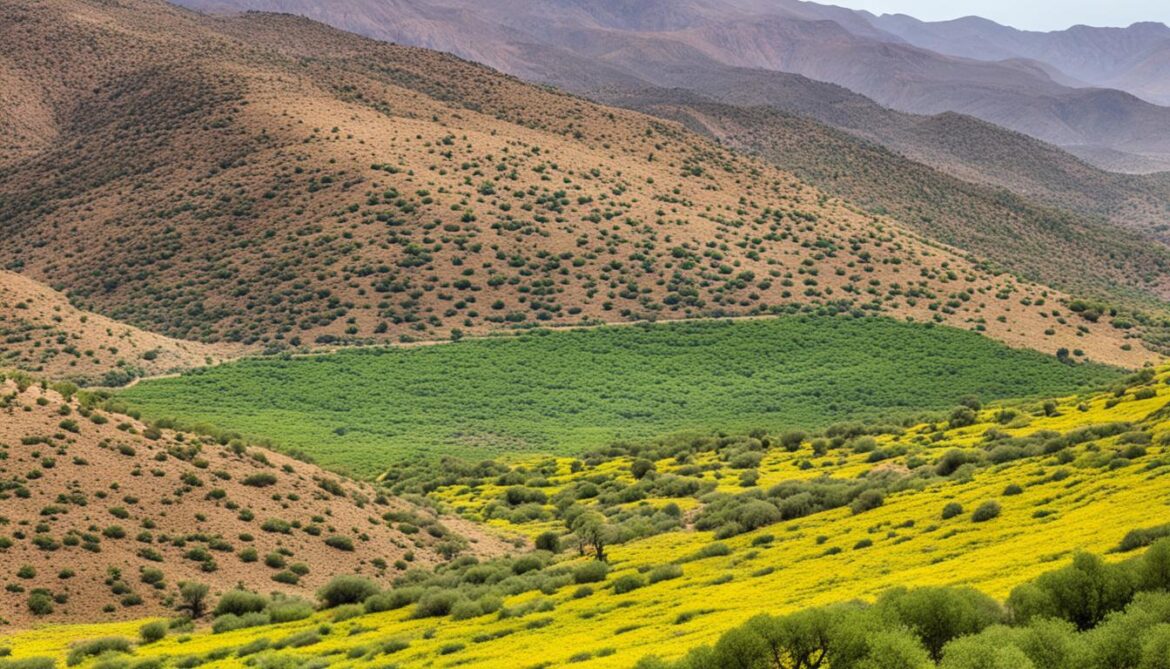
Implementing the NBSAP is crucial for Eritrea to safeguard its rich biodiversity and ensure the well-being of its ecosystems and species. By improving coordination, raising awareness, mainstreaming biodiversity considerations, building capacity, mobilizing resources, and implementing robust monitoring and evaluation systems, Eritrea can effectively manage and protect its biodiversity for generations to come.
Conclusion
Throughout the years, Eritrea has demonstrated commendable dedication to biodiversity conservation. The establishment of protected areas, the development of policies and strategies, and the implementation of the National Biodiversity Strategy and Action Plan are testaments to the country’s commitment to preserving its rich natural heritage. These efforts have undoubtedly contributed to the safeguarding of Eritrea’s unique flora and fauna.
However, challenges remain on the path to effective conservation. There is a pressing need to address the lack of awareness, inadequate coordination, and limited resources that hinder progress. By actively tackling these obstacles and enhancing the implementation of conservation initiatives, Eritrea can further strengthen its commitment to biodiversity preservation.
In moving forward, Eritrea must continue its efforts with resilience and determination. By raising awareness, fostering coordination among stakeholders, and allocating sufficient resources, the country can overcome these challenges and pave the way for the long-term sustainability of its ecosystems and the conservation of its invaluable biodiversity. Eritrea’s commitment to biodiversity conservation will ensure the continued protection of its natural treasures for future generations to enjoy.
FAQ
What is the status of biodiversity conservation in Eritrea?
Eritrea has made significant efforts in biodiversity conservation through the establishment of protected areas, development of policies and strategies, and implementation of the National Biodiversity Strategy and Action Plan.
What are the key biodiversity hotspots in Eritrea?
The key biodiversity hotspots in Eritrea include Semienawi and Debubawi Bahri, Buri-Irori-Hawakil, Berasole estuary, and the Gash-Setit Elephant Sanctuary.
What successes has Eritrea achieved in biodiversity conservation?
Eritrea has achieved successes in biodiversity conservation through the establishment of protected areas, including Semienawi and Debubawi Bahri, and the Gash-Setit Elephant Sanctuary.
What are the challenges Eritrea faces in biodiversity conservation?
Eritrea faces challenges in biodiversity conservation, such as a lack of awareness, inadequate coordination, and limited resources.
What is Eritrea’s National Biodiversity Strategy and Action Plan?
Eritrea’s National Biodiversity Strategy and Action Plan (NBSAP) is a guiding document that aims to address the underlying causes of biodiversity loss, reduce direct pressures on biodiversity, improve the status of biodiversity, enhance the benefits from biodiversity, and enhance implementation through participatory planning and capacity building.
What is Eritrea’s policy and governance approach to biodiversity?
Eritrea has various policies, strategies, and plans in place to govern its biodiversity conservation efforts, including the National Action Program to Combat Desertification, Forest and Wildlife Conservation and Development Proclamation, National Coastal Policy, Land Use Policy, Water Policy, and Fisheries Proclamation.
What are Eritrea’s goals and ambitions for biodiversity conservation?
Eritrea aims to conserve its biological diversity, use its biological resources sustainably, and ensure the fair and equitable sharing of benefits arising from the use of genetic resources.
What is Eritrea’s need for effective implementation in biodiversity conservation?
To achieve its goals in biodiversity conservation, Eritrea needs to improve coordination, raise awareness, and effectively implement its strategies and plans.
In conclusion, what is the current status of biodiversity conservation in Eritrea?
Eritrea has made significant progress in biodiversity conservation. However, challenges such as lack of awareness, inadequate coordination, and limited resources need to be addressed to ensure the long-term sustainability of its ecosystems and species.
Source Links






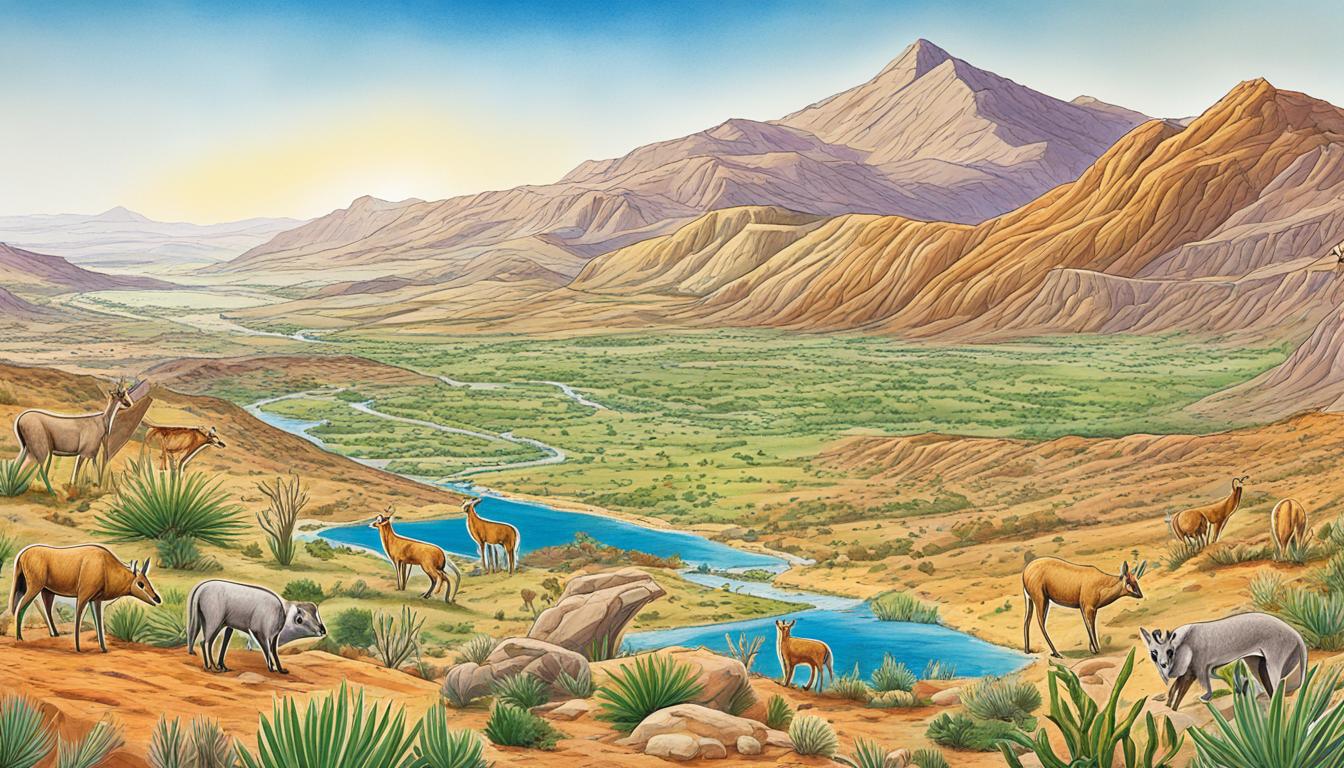

















Post comments (0)